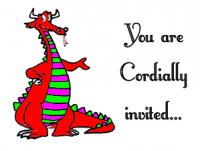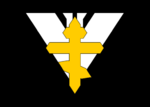Defenders of the Earth

|
"Defenders of the Earth" ("Защитники Мира") is a Russian sci-fi TV show from the 1970s, which has been compared to a Snorist "Space Voyage 2245", although it predates the Western show by almost a decade and conceptually has more in common with earlier comic-book and animated sci-fi adventures like Jacques Cartier, the Doc Sauvage Series and of course Khoroshij Polkovnik. In Russia proper, the series ran from 1975-1979 and has been repeated several times since and picked up by almost all of the Snorist states of the CMAEC.
The show is set in an unspecified year in the late 24th Century and follows the adventures of the military crew of Earth's primary forward defence base on the far side of the moon. The action takes place entirely within the Solar System; indeed, most of it between the Earth, the Moon and several orbital fortresses; and all the major antagonists are from within the Solar System. "Defenders" operates on an interplanetary, not interstellar level.
This is a Snorist production, so certain things can be taken for granted. Earth is portrayed as heavily Slav-dominated; the global capital is at "Novy Sankt Peterborg". It is revealed early in the second season that most of Western civilisation killed itself off in internecine warfare and the peace-loving Slavs inherited what was left of the Earth and transformed it into a Snorist paradise. The government of the Earth state, known only as the "Imperium" ("Цария"), is obviously the SNOR itself, even down to the streamlined SNOR logo used as an identifying symbol by the Earth's Defenders.
Antagonists
- Martian Collective – portrayed as a pseudo-Communist regime
- Veneran Federation – a Snorist caricature of the NAL and other Western "democracies": effete, decadent, corrupt & ruled by a cabal of business interests, drug barons and media lords.
- Outsiders - survivors of Western warfare, living mostly in what was once Tejas, Louisianne and the southern NAL; heavily mutated by radioactivity and tribal in organisation.
Aliens
Not all of the aliens are antagonistic, but most of them are, and even those allied with Earth are not altogether "good guys"; they have their own agendas that are often in conflict with Mankind's. These are some of the aliens featured on the show:
- Martians - The main recurring antagonists, despite the heavy make-up requirements. Martians are part reptile and part insectoid, with grey-black mottled scaly skin, compound eyes and antennae.
- Venerans - The Veneran government is controlled by renegade humans who fled to Venus (Venera in Russian) and have interbred with the Veneran race. Pure Venerans are amphibious, with webbed feet and hands, bright green skin, long tails and fin-like crests running down their spine. Veneran hybrids are more humanoid; they lack tails and crests, but retain the green skin and webbed hands and feet. Some even have hair, depending on the relative percentages of Veneran and Human.
- Kosma - Human-looking, but having telekinetic powers. Her exact race is indeterminate, but presubably telekinesis is normal for her species, as Kosma herself does not treat the ability as unusual.
Cast
- Polkovnik (colonel) Aleksandr Vasilievich Blagoslavskiy – commanding officer
- Fr. Gennadiy Sergeyevich Lazarev – chaplain, father figure, effective second-in-command
- Maior (major) Ivan Nikolayevich Kamarov – ground forces commander
- Kapitan (captain) Aman Daniyarovich Alopanov – chief pilot, always making trouble, supposedly Qazaq but played by a half-Tatar half-Russian actor
- Dr. Yoxi Camaxita – medical officer
- Lt. Svetlana Yurievna Romanova – science expert & damsel-in-distress
- Lt. Valentin Pyotrovich Tsilkov – promising junior officer
- Senior Sergeant Boris Andreyevich Ivanov – salt-of-the-earth security watchman, fiercely loyal, strong, devout, needs leadership.
- MAKSIM - kawar
In the eighth episode of the first season the cast discovered an alien spacecraft wrecked on the moon. The only survivors were a telekinetic alien woman and her daughter who became semi-regular members of the cast. Though "Kosma" was extremely intelligent and technologically knowledgeable, her primary interest was always her daughter. A criticism of the later seasons was the number of times that Kosma would invent a toy for her daughter that would somehow prove to be exactly what the crew needed to deal with that episode's crisis. There were also a few people, mainly in the west, who found Kosma's willingness to subordinate herself to the base hierarchy disturbing.
Planet Ten
Without a doubt, the most famous storyline or episode arc in the series was the so-called "Planet Ten" trilogy in the third season. Simply put, various cults on Venus and among the Outsiders began to commit murders in the name of something they called "The Brightness", whose coming to purge the world they eagerly anticipated. All this coincided with the discovery of a small tenth planet entering the solar system, taking up an orbit halfway between Mars and Jupiter. Almost against his will, the discoverer dubbed the new world "Pan" after the horned Roman god of forests. An expedition sent there vanishes without a trace, even while evidence mounts that the Martian Collective has established contact with some form of life on Pan.
Commander Blagoslavskiy leads a special mission to Pan, and along the way everyone is tempted with secrets and special longings from their past. In the end, Blagoslavskiy decides to use the atomic weapons on board--a last resort option. He arms the bombs and crashes into the alien planet. Suddenly, the planet is gone and everyone is themselves again. Father Lazarev theorizes that Pan was in fact an avatar of the Devil, testing mankind's spiritual defenses.
Production
The budget for the show was relatively low for such a high concept, which had an impact on design and special effects. In the eyes of many audience members, this actually added to the overall realism. For example, the outer space shots (done with models and kept to a minimum) were without sound, as would in fact be the case. The uniforms worn by most of the regulars and a lot of guests were extremely simple--black trousers with a colored stripe for officers, black double-breasted tunics with high collars. Rank tended to be shown via different numbers and designs of buttons on the tunic (coupled with braid, shoulder boards, etc.) It also proved a very easy look to copy, a boon for fans.
Venerian uniforms were even simpler, identical save for a large insignia over the left breast and a different-colored shirt worn under the tunic. Martian uniforms were totally identical, in keeping their collective world view (and being even cheaper to do that way).
The sets were often extremely simple, with several of them constantly redressed to become offices, bars, laboratories, etc. A standard "cave" set became notorious for its overuse (and its totally smooth floor) while several outdoor locations came to be used again and again (a particular rock quarry shot through a red-tinged filter was a stand-in for Mars).
Likewise, the personal weapons (either "blasters" or "stunners") used by characters only made a sound, emitting nothing visible at all.

